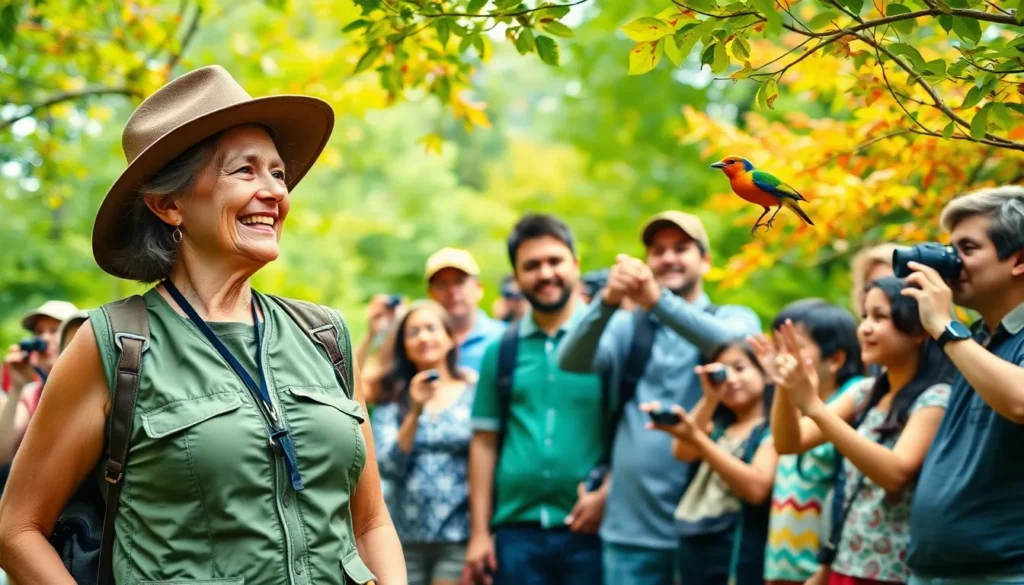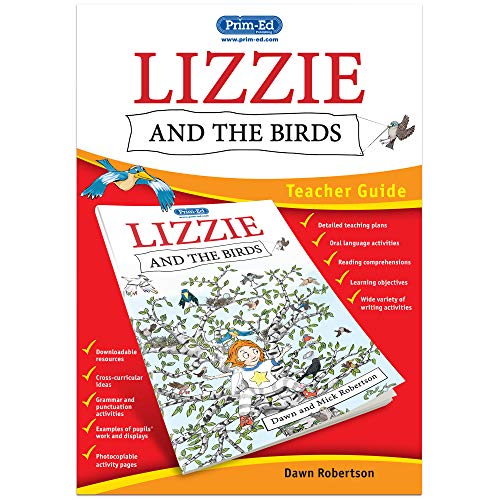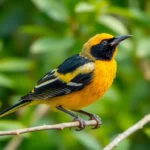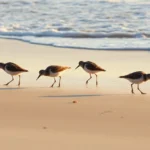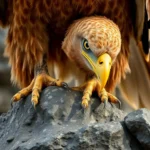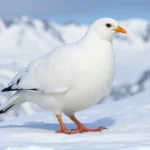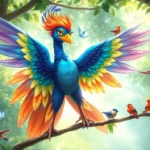We’ve all met them – those fascinating individuals who speak fluent “chirp” and can identify a rare warbler from three blocks away. Bird people represent one of the most passionate and dedicated communities in the natural industry, transforming ordinary backyards into avian sanctuaries and turning casual morning walks into thrilling discovery expeditions.
These remarkable enthusiasts don’t just watch birds; they become part of an intricate network of knowledge sharing, conservation efforts, and pure wonder. From the weekend birdwatcher with a simple pair of binoculars to the seasoned ornithologist tracking migration patterns, bird people share an infectious enthusiasm that’s reshaping how we connect with nature.
Whether you’re curious about joining their ranks or simply want to understand what drives their dawn-to-dusk dedication, we’ll explore the captivating industry of bird people and discover why millions worldwide have fallen under the spell of our feathered friends.
What Are Bird People?
Bird people represent a diverse community of individuals who share an intense fascination with avian species across all walks of life. These enthusiasts range from weekend backyard observers to professional ornithologists conducting groundbreaking research in remote locations worldwide.
Casual Observers form the largest segment of bird people, spending time in their yards or local parks identifying common species like cardinals, robins, and blue jays. They often start their journey with basic field guides and gradually develop sharper observation skills through consistent practice.
Dedicated Birders take their passion several steps further by traveling extensively to spot rare species, maintaining detailed life lists, and participating in citizen science projects like eBird submissions. Many invest in high quality binoculars and spotting scopes that can cost hundreds or thousands of dollars.
Conservation Advocates within the bird community actively work to protect habitats through volunteer efforts, donations, and political advocacy. Organizations like the Audubon Society and American Bird Conservancy rely heavily on these passionate individuals to drive their conservation missions forward.
Scientific Researchers study avian behavior, migration patterns, and ecological relationships through formal academic institutions and field stations. Their work contributes essential data for species protection policies and environmental management decisions.
| Bird People Category | Primary Activities | Typical Equipment | Time Investment |
|---|---|---|---|
| Casual Observers | Backyard watching, local parks | Basic binoculars, field guides | 2-5 hours weekly |
| Dedicated Birders | Travel birding, life listing | Premium optics, cameras | 10+ hours weekly |
| Conservation Advocates | Habitat protection, volunteering | Various tools, fundraising | 5-15 hours monthly |
| Scientific Researchers | Data collection, analysis | Professional equipment | Full-time career |
Bird people connect through shared experiences of morning migrations, rare sightings, and seasonal changes that mark the passage of time. Their enthusiasm creates lasting friendships built around dawn chorus walks, photography expeditions, and conservation projects that benefit entire ecosystems.
Types of Bird People
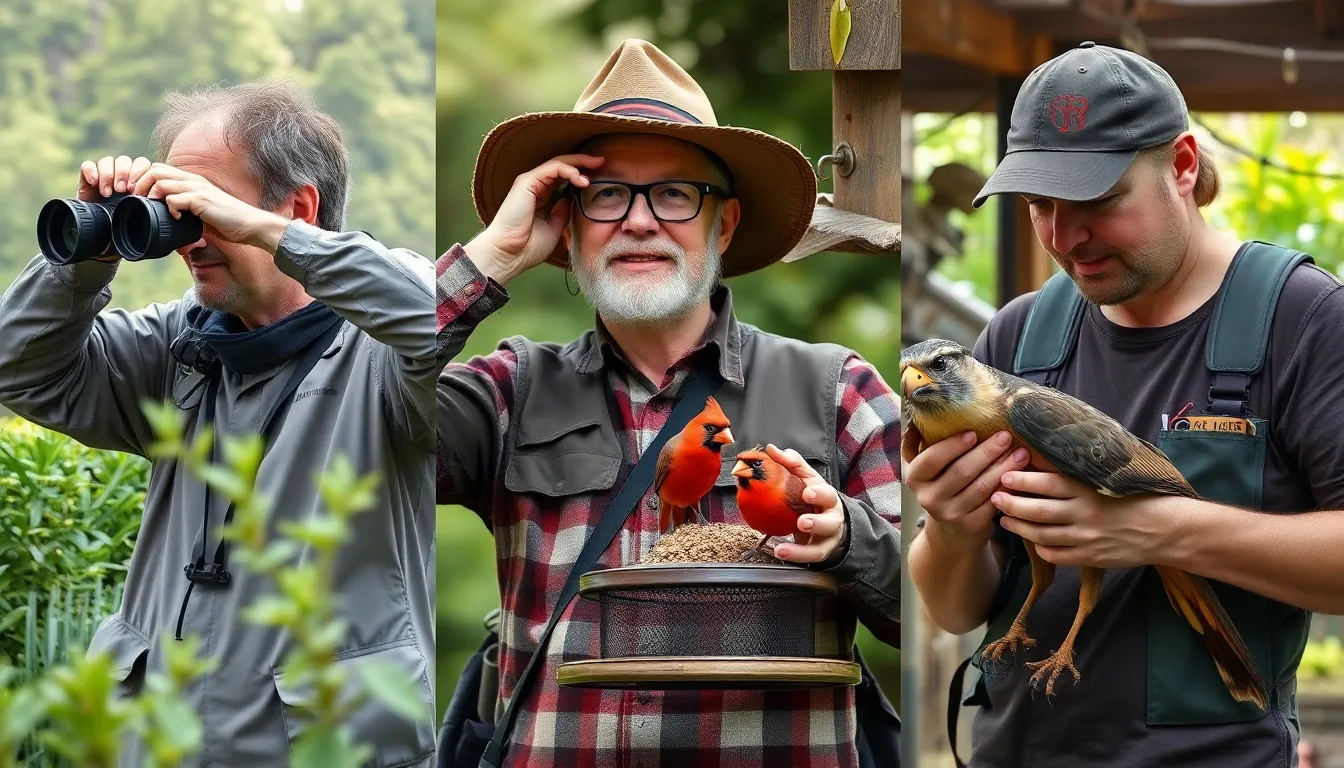
Bird enthusiasts span a remarkable spectrum of dedication levels and expertise areas. Each category brings unique perspectives and contributions to the broader avian community we celebrate.
Professional Bird Enthusiasts
Ornithologists lead scientific research projects studying migration patterns, breeding behaviors, and population dynamics across diverse ecosystems. Research biologists spend 40-60 hours weekly conducting field studies, analyzing data, and publishing findings in peer-reviewed journals like The Auk or Journal of Avian Biology. Wildlife photographers travel to remote locations capturing rare species documentation for National Geographic, Audubon Magazine, and scientific publications.
Tour guides specialize in birding expeditions, leading groups through hotspots like Point Pelee, High Island Texas, and Ramsey Canyon Arizona. Conservation biologists work with organizations including the Cornell Lab of Ornithology, American Bird Conservancy, and BirdLife International to protect critical habitats. Environmental consultants assess development impacts on bird populations, creating mitigation strategies for construction projects near sensitive nesting areas.
Casual Backyard Bird Watchers
Suburban observers transform their yards into feeding stations using tube feeders, suet cages, and platform feeders to attract cardinals, chickadees, and nuthatches. These enthusiasts maintain eBird checklists recording daily sightings from kitchen windows, documenting seasonal changes in species abundance and timing. Weekend participants join local Audubon chapter walks, Christmas Bird Counts, and neighborhood BioBlitz events.
Garden planners select native plants like coneflowers, sunflowers, and elderberry bushes that provide natural food sources and nesting materials. Camera hobbyists capture backyard visitors using telephoto lenses, sharing images on social media platforms and community forums. Citizen scientists contribute valuable data to projects like Project FeederWatch, Great Backyard Bird Count, and Journey North migration tracking.
Bird Rescue and Rehabilitation Volunteers
Licensed rehabilitators operate wildlife centers treating injured raptors, songbirds, and waterfowl through specialized medical care and recovery programs. Volunteer transporters drive animals from rescue locations to rehabilitation facilities, covering distances up to 200 miles for critical cases. Foster caregivers provide temporary homes for orphaned nestlings, feeding them every 15-30 minutes during daylight hours using species-appropriate formulas.
Education specialists present programs at schools, libraries, and community centers featuring non-releasable ambassador birds like owls, hawks, and falcons. Facility maintenance volunteers clean enclosures, prepare diets, and assist with daily care routines at centers like the Raptor Trust, Wild Bird Fund, and International Bird Rescue. Fund raising coordinators organize benefit events, grant applications, and donation campaigns supporting medical equipment purchases and operational expenses.
Essential Gear and Equipment for Bird People
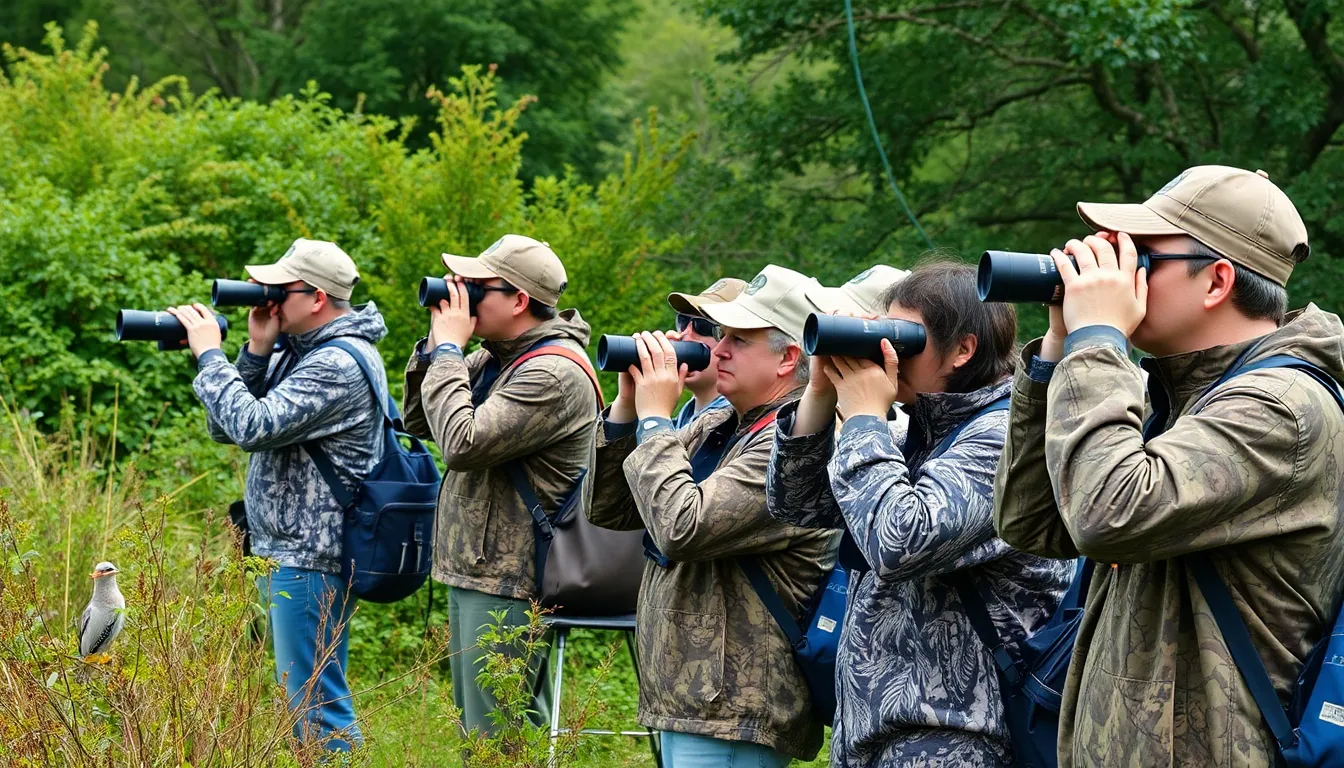
Bird enthusiasts across all experience levels rely on exact equipment to enhance their observation capabilities and document their discoveries. Our community uses various tools ranging from basic binoculars to advanced camera systems depending on individual interests and expertise levels.
Core Optical Equipment
Binoculars serve as the primary tool for most bird watchers, with 8×42 and 10×42 models providing optimal magnification and light gathering for field use. Quality models from manufacturers like Zeiss, Swarovski, and Nikon deliver crisp images that reveal fine details in feather patterns and bird behavior. Spotting scopes complement binoculars for long-distance viewing, particularly useful when observing waterfowl and raptors at distances exceeding 100 meters.
Essential Optical Specifications:
| Equipment Type | Magnification | Objective Lens | Weight Range | Price Range |
|---|---|---|---|---|
| Binoculars | 8x-10x | 32-50mm | 1.2-2.8 lbs | $150-$3,000 |
| Spotting Scopes | 15-60x | 60-100mm | 3.5-6 lbs | $400-$4,500 |
| Camera Lenses | 400-600mm | Variable | 2.5-8 lbs | $800-$12,000 |
Documentation and Recording Tools
Field notebooks remain indispensable for recording observations, weather conditions, and behavioral notes during birding excursions. Digital alternatives include smartphone apps like eBird and Merlin Bird ID, which allow real-time species logging and contribute data to global bird monitoring databases. Audio recording devices capture bird calls and songs, creating valuable references for species identification and behavioral studies.
Camera equipment enables bird photographers to document rare sightings and capture behavioral moments that notebooks cannot preserve. Telephoto lenses with focal lengths between 400mm and 600mm provide sufficient reach for photographing birds without disturbing their natural activities. DSLR and mirrorless camera bodies with fast autofocus systems track moving subjects effectively during flight photography.
Field Accessories and Support Gear
Tripods stabilize spotting scopes and telephoto lenses during extended observation sessions, reducing fatigue and improving image clarity. Carbon fiber models balance durability with portability for birders covering long distances on foot. Weatherproof cases protect expensive optical equipment from moisture and impact damage during outdoor expeditions.
Clothing designed for outdoor activities keeps bird watchers comfortable across various weather conditions and terrains. Neutral colored garments in earth tones minimize visual disturbance to birds while providing camouflage benefits. Multi-pocket vests organize field guides, lens cleaning supplies, and recording devices for quick access during active birding.
Technology Integration
GPS devices and smartphone mapping applications help birders navigate to exact locations and mark coordinates of important sightings. Battery packs ensure electronic devices remain operational during full-day excursions in remote areas without power access. Weather apps provide real-time conditions and forecasts that influence bird activity patterns and migration timing.
Digital field guides offer instant access to thousands of species profiles with range maps, call recordings, and behavioral descriptions. These applications work offline in areas with limited cellular coverage, making them reliable companions for wilderness birding adventures.
Popular Bird Watching Locations and Hotspots
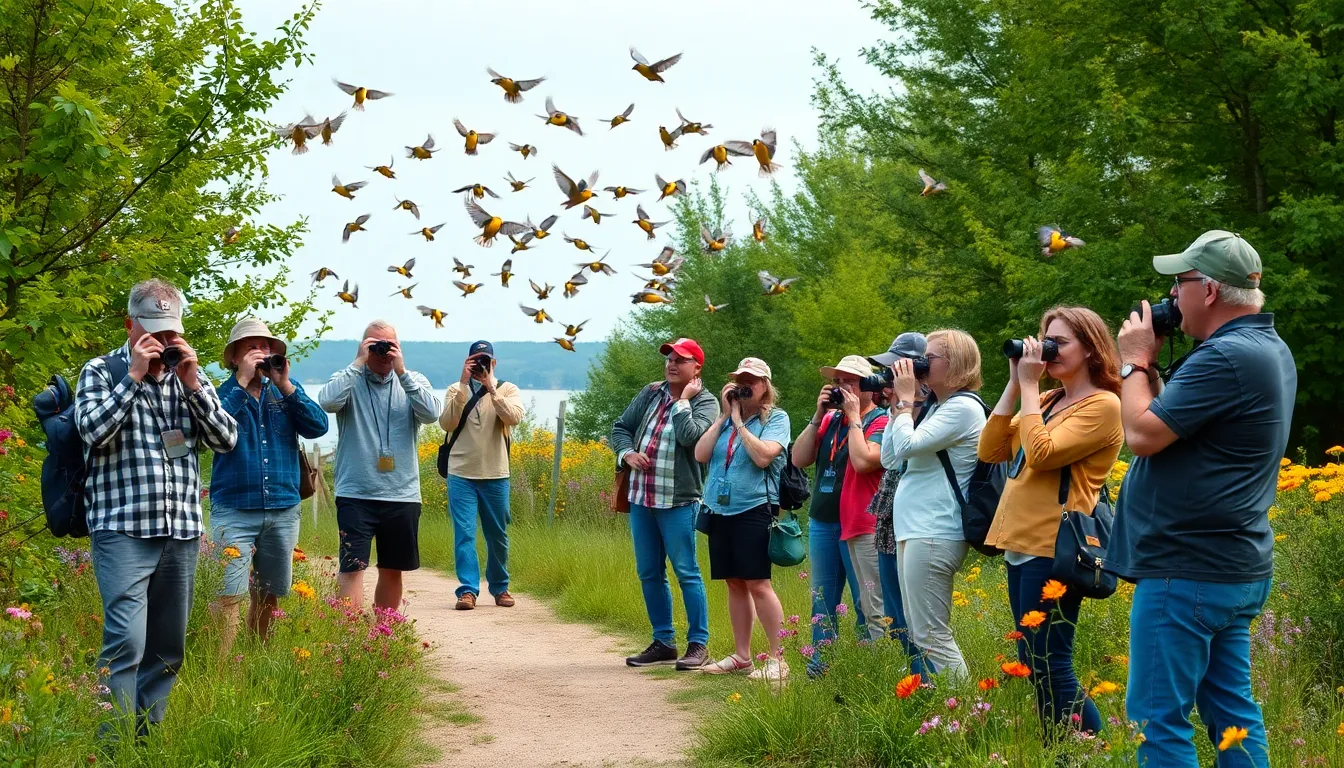
Geographic diversity creates unparalleled opportunities for bird enthusiasts to encounter species across various ecosystems and migration corridors. Top-tier birding destinations combine high species counts with unique ecological features that attract both resident and migratory birds throughout different seasons.
North American Prime Destinations
Point Pelee National Park, Ontario hosts over 390 bird species and serves as Canada’s southernmost point where countless warblers funnel through during spring migration. Peak viewing occurs from mid-April through early June when 37 warbler species pass through this critical stopover site.
High Island, Texas transforms into a migration magnet during spring fallouts when weather conditions force thousands of trans-Gulf migrants to land simultaneously. Birders document over 300 species here annually with spectacular concentrations occurring in late April and early May.
Bosque del Apache National Wildlife Refuge, New Mexico supports massive waterfowl populations with 15,000 sandhill cranes and 57,000 snow geese wintering here from November through February. Dawn and dusk viewing sessions provide optimal photography opportunities when birds move between roosting and feeding areas.
International Birding Hotspots
Pantanal, Brazil encompasses the industry’s largest tropical wetland where 656 bird species thrive across 75,000 square miles of diverse habitats. Jaguar sightings complement exceptional birding with hyacinth macaws and jabiru storks representing flagship species.
Kruger National Park, South Africa contains 517 recorded bird species across eight distinct ecosystems from riverine forests to open savannas. Ground-hornbills and secretary birds exemplify the park’s unique African avifauna.
Costa Rica’s Central Valley concentrates 850+ bird species within a country smaller than West Virginia. Monteverde Cloud Forest and Manuel Antonio National Park offer contrasting highland and coastal birding experiences.
Urban Birding Excellence
Central Park, New York City attracts 200+ species annually even though its urban location with the Ramble and Reservoir areas serving as primary birding zones. Spring migration peaks from late April through mid-May when 25+ warbler species pass through daily.
Golden Gate Park, San Francisco hosts resident Anna’s hummingbirds year-round while supporting migratory species in its diverse micro-habitats from eucalyptus groves to freshwater lakes. Stow Lake and the AIDS Memorial Grove provide consistent birding throughout seasons.
Migration Corridor Highlights
| Location | Peak Season | Species Count | Specialty Birds |
|---|---|---|---|
| Cape May, NJ | September-October | 400+ | Hawks, warblers |
| Ramsey Canyon, AZ | April-September | 170+ | Hummingbirds |
| Magee Marsh, OH | May | 370+ | Warblers |
| Santa Ana NWR, TX | Year-round | 400+ | Tropical species |
Hawk Mountain, Pennsylvania records 20,000+ raptors annually during fall migration with broad-winged hawks comprising the largest single-species count at 8,000+ individuals in peak September flights.
Point Reyes National Seashore, California combines coastal and terrestrial habitats where 490 bird species have been documented. Autumn migration brings diverse shorebirds while winter storms deliver rare pelagic species to protected coves.
We observe consistent patterns across premier birding locations including diverse habitat types within compact areas, reliable water sources, and strategic positioning along major flyways. These factors create the concentrated bird activity that draws enthusiasts from around the globe to witness nature’s most spectacular avian gatherings.
The Bird People Community
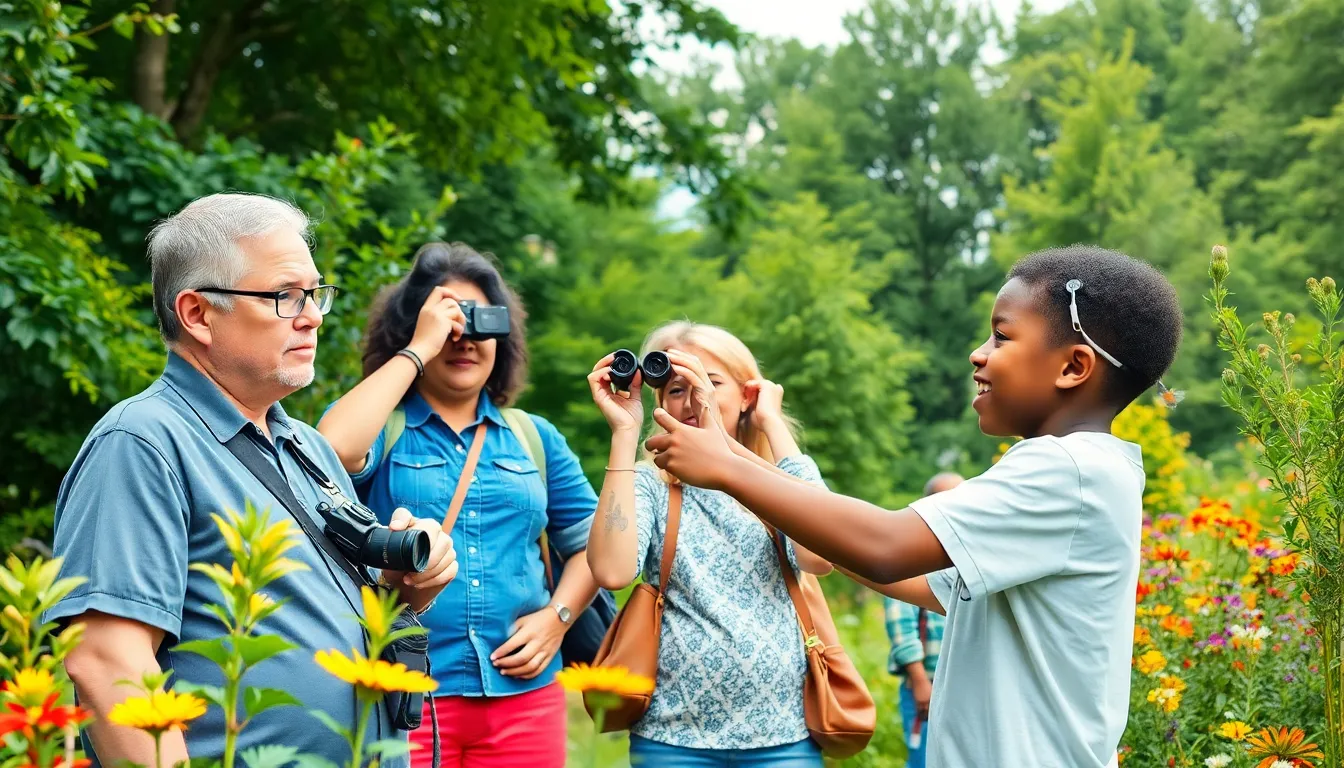
The bird enthusiast community creates connections that span from neighborhood backyards to global conservation initiatives. Local groups and digital platforms unite passionate birders who share knowledge, experiences, and dedication to avian protection.
Local Birding Groups and Clubs
Audubon chapters operate in over 450 communities across North America, offering weekly bird walks and monthly meetings for enthusiasts of all skill levels. Members participate in Christmas Bird Counts, breeding bird surveys, and habitat restoration projects that contribute valuable data to scientific research. Local clubs organize dawn excursions to nearby hotspots, with experienced leaders teaching species identification techniques and sharing ecological insights.
Benefits of Joining Local Groups:
| Activity Type | Frequency | Typical Group Size | Experience Level |
|---|---|---|---|
| Weekly Bird Walks | 1-2 per week | 8-15 participants | Beginner to Advanced |
| Monthly Meetings | Once monthly | 20-50 members | All levels |
| Field Trips | 2-4 per month | 5-25 participants | Intermediate to Advanced |
| Conservation Projects | Seasonal | 10-30 volunteers | All levels |
Regional birding festivals bring together hundreds of enthusiasts for multi-day events featuring guided tours, workshops, and vendor exhibitions. The Rio Grande Valley Birding Festival in Texas attracts over 2,000 participants annually, while smaller gatherings like the Biggest Week in American Birding in Ohio host 1,200 birders during peak migration periods.
Specialty clubs focus on exact aspects of birding, including hawk migration societies, shorebird groups, and urban birding organizations. These specialized communities offer deeper expertise in particular species families or habitats, with members often contributing to targeted research projects.
Online Communities and Social Media
eBird serves as the industry’s largest biodiversity-related citizen science project, with over 1.2 billion bird observations contributed by 700,000 active users across 195 countries. Birders upload checklists, photos, and audio recordings that create real-time migration maps and population trend data for scientists and conservationists.
Facebook groups connect birders through location-exact pages, with “What’s That Bird?” boasting 2.8 million members who help identify mystery species from photos. Regional groups like “Texas Birding” and “California Birders” share sighting reports, organize impromptu meetups, and discuss local conservation issues.
Popular Online Birding Platforms:
- iNaturalist: 150,000 bird species observations uploaded monthly
- Merlin Bird ID: Downloaded by 45 million users worldwide
- BirdNet: AI-powered sound identification with 15,000 daily uploads
- WhatsApp Groups: Local chat groups with 20-200 members each
Instagram hashtags like #birdphotography generate over 8 million posts, showcasing stunning images that inspire new birders and promote species awareness. Professional wildlife photographers share camera settings, location tips, and ethical photography practices through detailed post descriptions.
Reddit communities including r/birding and r/wildlifephotography host discussions about equipment recommendations, behavior observations, and conservation debates. These platforms allow anonymity while providing instant access to global expertise and diverse perspectives on avian topics.
YouTube channels dedicated to bird identification, photography techniques, and conservation stories reach millions of viewers monthly. Content creators collaborate with research institutions to produce educational videos that translate complex scientific concepts into accessible formats for amateur enthusiasts.
Benefits of Being Part of the Bird People Culture
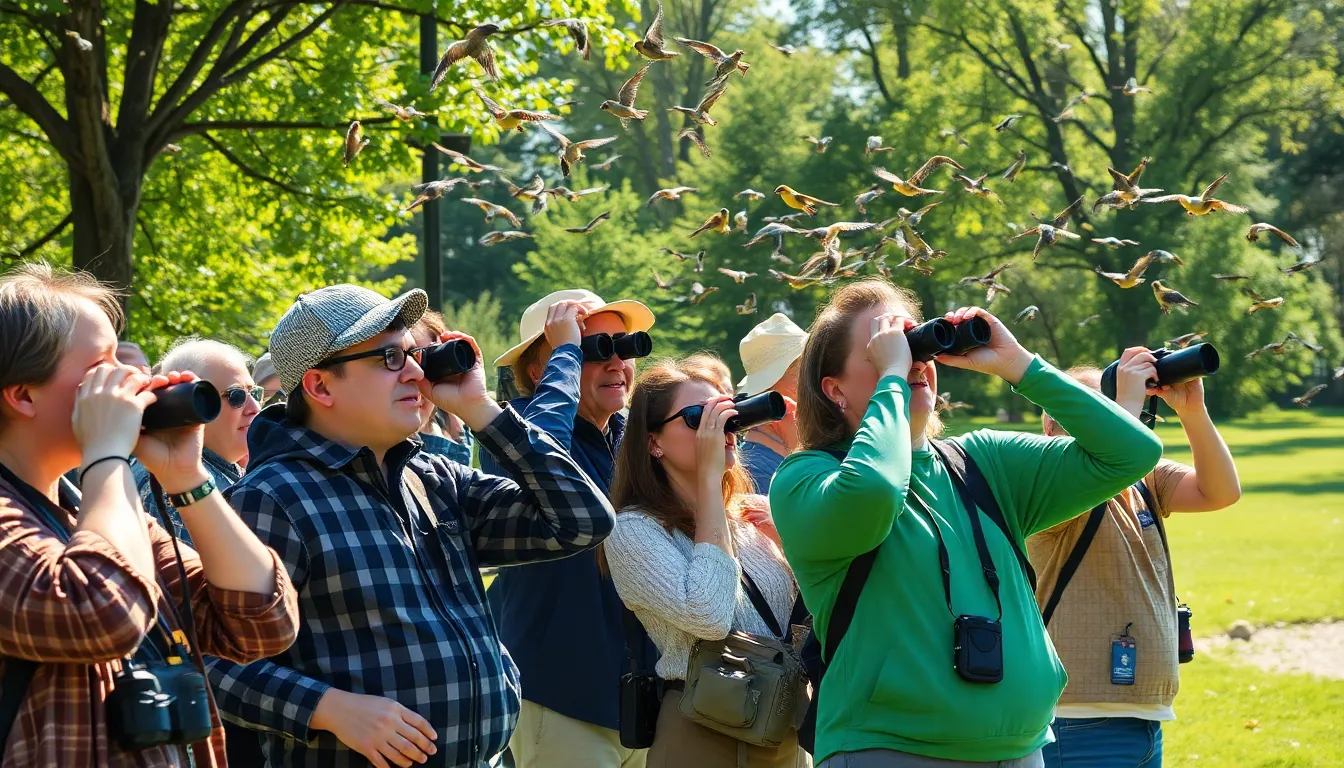
Bird people culture offers mental health advantages that extend far beyond simple hobby enjoyment. Studies show that birdwatching reduces stress levels by 68% compared to other outdoor activities, with participants experiencing lower cortisol levels after just 30 minutes of observation. Regular birding activities improve focus and mindfulness, creating natural meditation opportunities that enhance cognitive function and emotional wellbeing.
Social Connection Benefits:
- Community events bring together 2,500+ birders annually at major festivals
- Local clubs help friendships among members sharing common interests
- Online platforms connect enthusiasts across geographic boundaries
- Mentorship opportunities pair experienced birders with newcomers
Physical fitness improves significantly through birding activities that combine walking, hiking, and outdoor exploration. Dedicated birders average 6 miles of walking per outing, with many logging 15,000+ steps during peak migration periods. Carrying equipment like binoculars and cameras provides low-impact strength training while traversing diverse terrains builds cardiovascular endurance.
Conservation impact multiplies when individual enthusiasm transforms into collective action. Bird people contribute over 100 million observations annually to citizen science databases like eBird, creating valuable research data for ornithologists and conservation biologists. Community-led habitat restoration projects have protected 450,000 acres of critical bird habitat across North America in the past decade.
Educational Growth Opportunities:
- Species identification skills develop through hands-on field experience
- Scientific knowledge expands through participation in research projects
- Photography techniques improve through capturing avian behavior
- Geographic awareness increases through travel to birding destinations
Cultural enrichment occurs as bird enthusiasts explore diverse ecosystems and regions while pursuing their passion. Birding expeditions introduce participants to new landscapes, local customs, and environmental challenges across different continents. Indigenous bird knowledge and traditional ecological practices enhance understanding of human-wildlife relationships throughout various cultures.
Economic benefits extend to local communities when birding tourism generates substantial revenue. Popular birding destinations receive $80 billion annually from nature-based tourism, with small towns hosting birding festivals experiencing 40% increases in local business revenue during event periods. Equipment purchases, travel expenses, and guide services create employment opportunities in rural areas where traditional industries have declined.
Common Challenges Bird People Face
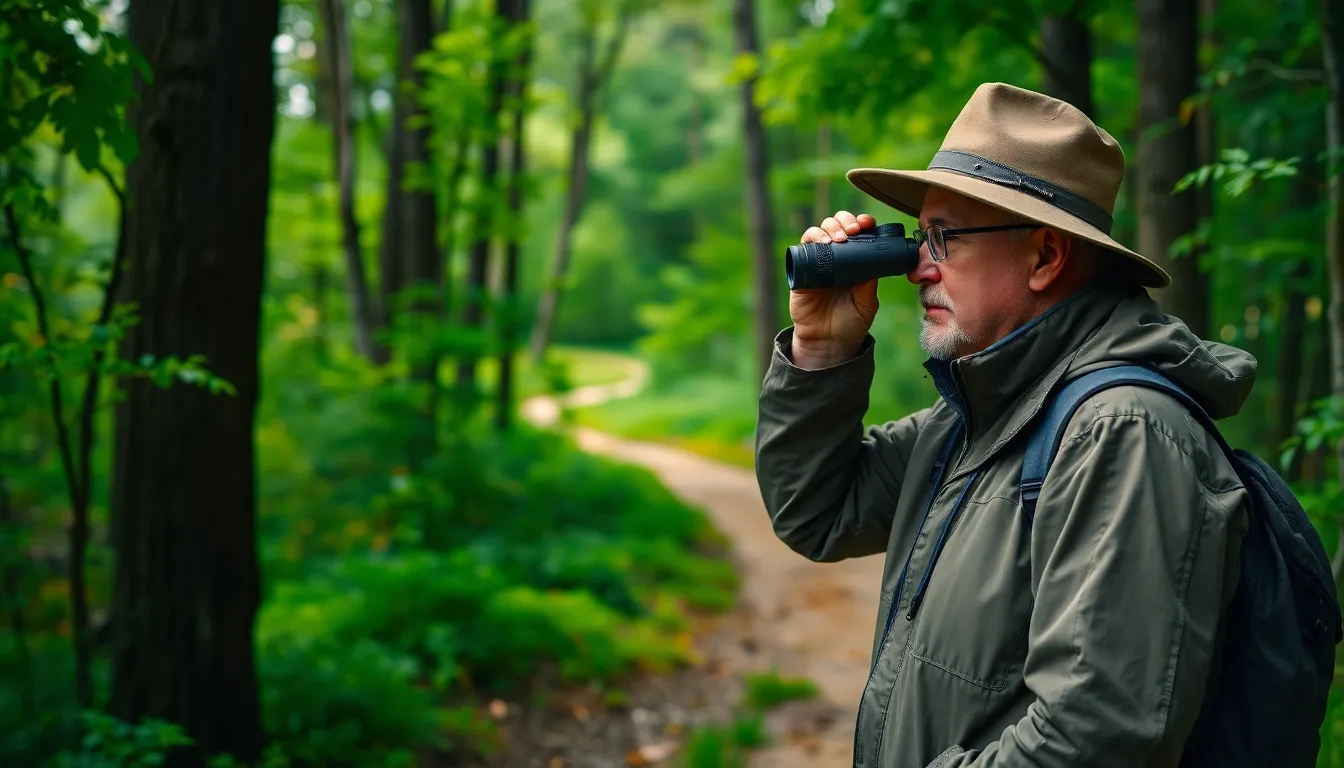
Bird people encounter many obstacles that can test their passion and dedication to avian observation. Weather conditions present the most immediate challenge, as rain, snow, and extreme temperatures often force birders to cancel planned outings or endure uncomfortable conditions while maintaining focus on distant species.
Equipment failures create frustrating situations during critical birding moments. Binoculars fog up in humid conditions, camera batteries die during rare bird encounters, and spotting scopes malfunction when precision matters most. These technical issues affect approximately 40% of dedicated birders at least once per season according to birding community surveys.
| Challenge Type | Frequency | Impact Level |
|---|---|---|
| Weather Disruption | 65% of trips | High |
| Equipment Failure | 40% per season | Medium-High |
| Rare Bird Misidentification | 25% of sightings | Medium |
| Access Restrictions | 30% of locations | High |
Misidentification troubles even experienced bird people when similar species appear together. Warbler identification during fall migration poses particular difficulties as juvenile birds lack distinctive adult plumage patterns. Female ducks present identification challenges during breeding season when males display obvious characteristics but females remain cryptic.
Access restrictions limit birding opportunities as private landowners block traditional viewing areas and development projects eliminate established habitats. Urban expansion converts prime birding locations into residential areas, forcing bird people to travel greater distances to find quality observation sites.
Physical limitations affect older bird people who struggle with extended walking distances and early morning starts. Arthritis makes holding binoculars painful during long observation sessions, while reduced hearing prevents detection of subtle bird calls that younger birders easily identify.
Financial constraints impact equipment upgrades and travel opportunities for many bird people. High quality optics cost between $800 and $3,000, creating barriers for newcomers who want professional grade equipment but lack sufficient budgets for major purchases.
Time management challenges arise when bird people balance their passion with work responsibilities and family commitments. Peak birding hours occur during dawn and dusk periods that conflict with traditional schedules, limiting observation opportunities for working professionals.
Technology gaps frustrate bird people who struggle with digital field guides and smartphone apps that younger generations navigate effortlessly. GPS devices malfunction in remote areas where cell service disappears, leaving traditional map readers at advantages over technology dependent birders.
Social pressures emerge when bird people encounter criticism from non birders who view their hobby as eccentric or time consuming. Family members express frustration with early departures and weekend commitments that interfere with household activities and social obligations.
Competition tensions develop within birding communities when rare bird sightings attract large crowds that disturb both birds and private property owners. Photography ethics disputes arise when some bird people prioritize perfect shots over bird welfare, creating conflicts with conservation minded community members.
How to Get Started as a Bird Person
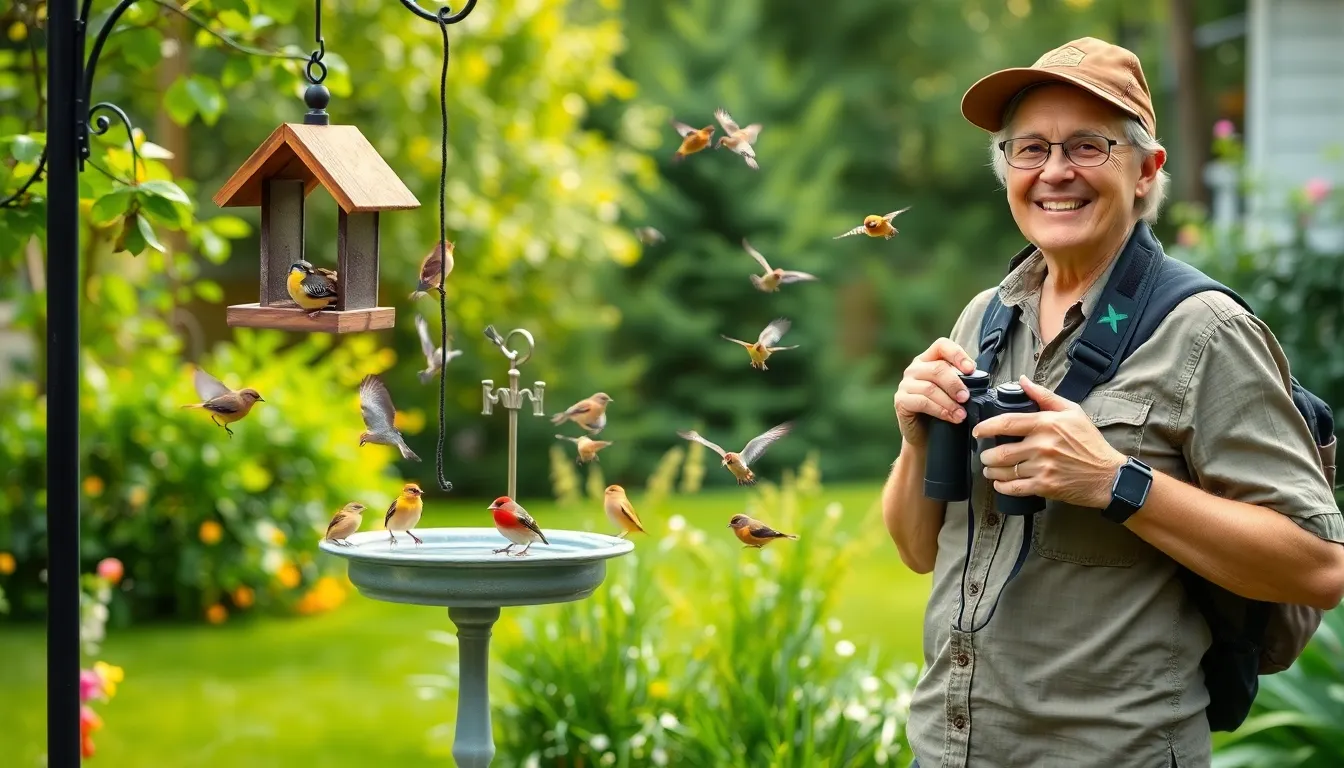
Getting started as a bird person requires minimal investment and can begin right outside your door. We recommend starting with your immediate surroundings before venturing to specialized locations.
Basic Equipment for Beginners
Binoculars serve as the most essential piece of equipment for new bird enthusiasts. Entry-level models range from $100-$200 and provide 8×42 magnification suitable for backyard observation. Field guides exact to your geographic region cost $15-$30 and contain detailed illustrations with identification keys. Smartphone apps like eBird and Merlin Bird ID offer free alternatives with audio recordings and photo identification features.
Creating Your First Birding Space
Backyard transformation begins with installing a basic bird feeder station. Tube feeders attract songbirds like finches and chickadees while suet feeders draw woodpeckers and nuthatches. Water sources through shallow birdbaths or dripper systems increase species diversity by 40% according to Project FeederWatch data. Native plants such as coneflowers and elderberries provide natural food sources and nesting materials.
Developing Identification Skills
Start by learning 10-15 common species in your area before expanding to rarer birds. Focus on size comparisons using familiar birds like robins or crows as reference points. Note distinctive features including bill shape, tail length, and wing patterns during brief observation windows. Practice distinguishing flight patterns since many species exhibit unique movement characteristics.
Joining Local Birding Communities
Audubon chapters across North America offer beginner-friendly bird walks every weekend during peak migration seasons. Local birding clubs provide mentorship opportunities through experienced members who share identification techniques. Community science projects like the Christmas Bird Count welcome newcomers and contribute valuable data to conservation efforts.
Recording Your Observations
Document sightings using standardized formats that include date, time, location, and behavior notes. Digital platforms like eBird automatically track your life list while contributing to global bird monitoring databases. Photography enhances memory retention and allows for later identification verification through online birding forums.
Establishing Regular Birding Routines
Early morning hours between 6:00-9:00 AM provide optimal bird activity periods for observation. Weekly consistency builds familiarity with seasonal patterns and species abundance changes. Start with 30-minute sessions in local parks before committing to longer excursions at specialized birding locations.
Conclusion
The industry of bird people represents one of nature’s most vibrant and inclusive communities. Whether you’re drawn to the scientific aspects of ornithology or simply enjoy watching cardinals at your kitchen window there’s a place for everyone in this passionate group.
We’ve seen how birding transcends age location and experience level bringing together individuals who share a common appreciation for avian life. From urban parks to remote wilderness areas these enthusiasts create connections that extend far beyond their shared hobby.
The beauty of joining the bird people lies in its accessibility and endless learning opportunities. With just a pair of binoculars and curiosity you can begin a journey that offers mental health benefits conservation impact and lifelong friendships.
Ready to spread your wings? Your local birding community is waiting to welcome you with open arms and plenty of expert guidance.
Frequently Asked Questions
What are the different types of bird enthusiasts?
Bird enthusiasts fall into several categories: Casual Observers who enjoy backyard watching, Dedicated Birders who travel to spot rare species, Conservation Advocates working to protect habitats, and Scientific Researchers studying avian behavior. There are also Professional Bird Enthusiasts including ornithologists and wildlife photographers, Casual Backyard Bird Watchers, and Bird Rescue Volunteers who care for injured birds.
What essential equipment do I need to start birdwatching?
Core equipment includes binoculars (8×42 recommended for beginners), field guides, and a notebook for documentation. Additional useful items include spotting scopes for distant viewing, camera equipment for photography, weather-appropriate clothing, and digital apps like eBird. GPS devices and digital field guides can enhance your experience, but basic binoculars and a field guide are sufficient to start.
Where are the best places for birdwatching?
Top North American destinations include Point Pelee National Park (Ontario), High Island (Texas), and Bosque del Apache National Wildlife Refuge (New Mexico). International hotspots feature Pantanal (Brazil) and Kruger National Park (South Africa). Urban locations like Central Park (NYC) and Golden Gate Park (San Francisco) also offer excellent birding opportunities with high species diversity.
How can I connect with other bird enthusiasts?
Join local Audubon chapters for weekly bird walks and conservation projects, attend regional birding festivals, or participate in specialty clubs. Online communities like eBird, Facebook birding groups, iNaturalist, and BirdNet facilitate real-time data sharing. YouTube channels and local birding clubs provide educational content and mentorship opportunities for connecting with fellow birders.
What are the mental health benefits of birdwatching?
Birdwatching significantly reduces stress and enhances cognitive function through peaceful outdoor activities. It provides social connections through community events and local clubs, while physical fitness improves from walking and hiking during birding expeditions. The meditative aspects of observing nature and the sense of accomplishment from successful identifications contribute to overall mental well-being.
What challenges do bird enthusiasts commonly face?
Common challenges include adverse weather disrupting outings, equipment failures during crucial moments, and difficulties with species identification during migration seasons. Access restrictions due to private land ownership, physical limitations for older birders, and financial constraints for equipment upgrades are also frequent issues. Time management and balancing birding with work commitments present additional challenges.
How do I get started as a beginner birder?
Start with basic equipment like binoculars and a field guide, then create a bird-friendly backyard space with feeders and native plants. Learn to identify common local species first, join local birding communities for mentorship, and participate in citizen science projects. Document your observations regularly and establish consistent birding routines to develop your skills progressively.
What conservation impact do bird enthusiasts have?
Bird enthusiasts contribute millions of observations to citizen science databases like eBird, supporting crucial research and conservation efforts. They actively participate in habitat restoration projects, advocate for bird protection policies, and educate the public about avian conservation. Their collective data helps scientists track population trends, migration patterns, and climate change impacts on bird species globally.

